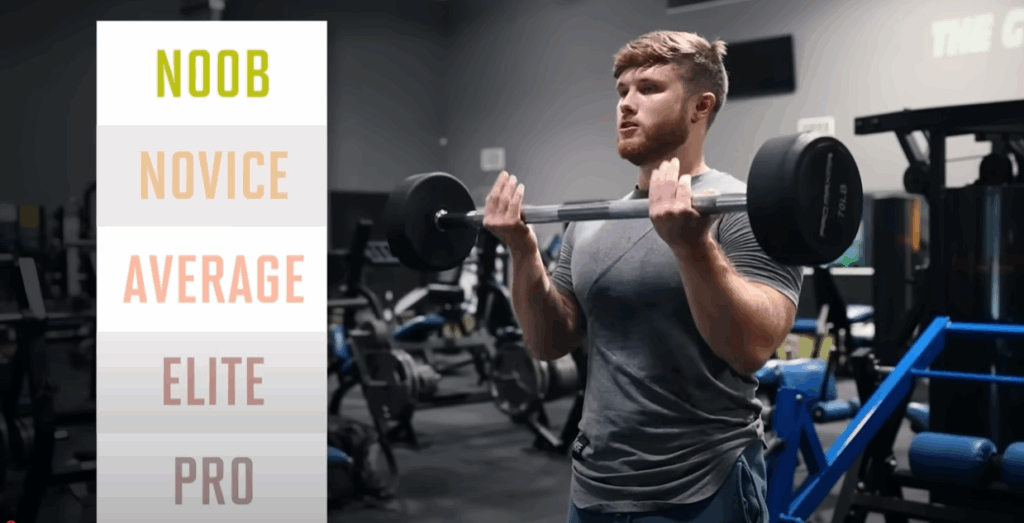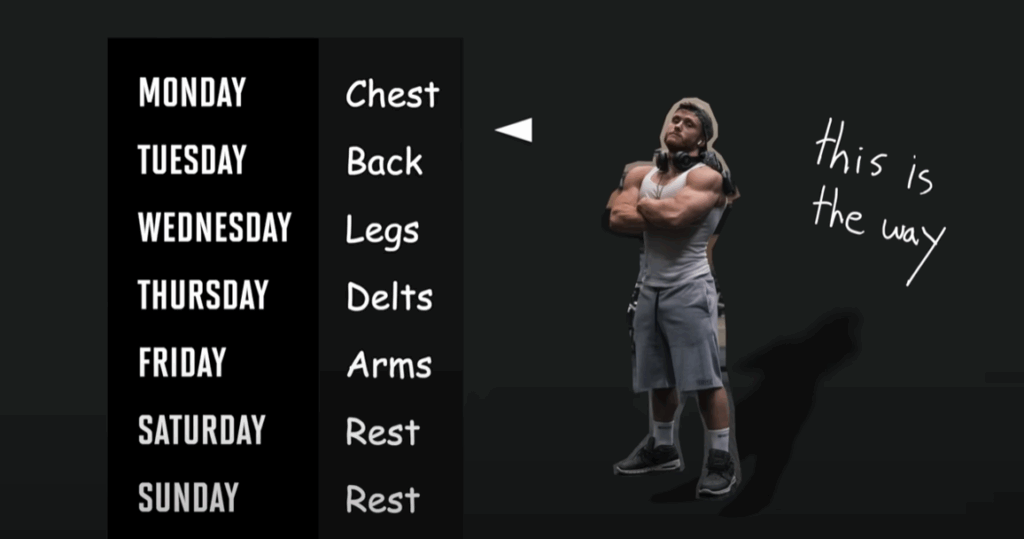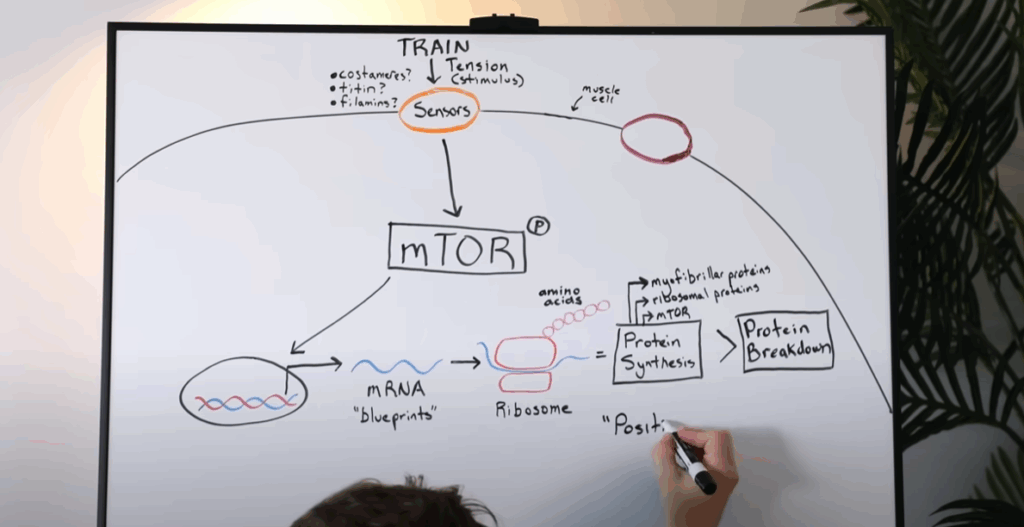How to Build Muscle: A Five-Tier Breakdown from Basic to Advanced Science
Building muscle may seem like a complicated process, but at its core, it’s driven by a few key principles. Whether you’re just stepping into the gym or you’re deep into the world of advanced hypertrophy strategies, understanding muscle growth requires a mix of practice and science. In this guide, we’ll explore five progressive levels of muscle-building knowledge—from the basics all the way to intricate cellular mechanics—so you can better understand how to optimize your training.

Level 1: The Simple Truth — Lift and Fuel
At the most foundational level, building muscle comes down to two things: resistance training and protein consumption. When you challenge your muscles with weight, you send a signal that says, “We need to be stronger.” In response, your body adapts by building more muscle tissue. But training alone isn’t enough—you also need the right nutrients to support growth.
Protein, found in foods like chicken, fish, eggs, dairy, and legumes, provides the amino acids your body needs to rebuild and grow muscle tissue. Think of training as sending a construction order, and protein as the bricks and mortar.
Level 2: Progress Over Time — The Importance of Overload
While lifting weights and eating protein will get you started, real progress comes from progressive overload. This simply means increasing the challenge over time—whether it’s more weight, more reps, better technique, or shorter rest intervals. Muscles only grow when they’re pushed beyond their comfort zone. If you’ve been doing the same routine for months without change, chances are your progress has stalled.
For example, if you’re curling 20 pounds for three sets of 10 every week, it’s time to add a rep, increase the weight, or improve your form. Even subtle progress—like lifting with more control—can stimulate new gains.
Level 3: Dialing It In — Effort, Volume, Intensity & More
Progressive overload is powerful, but it’s just one piece of the puzzle. Let’s look at the major training variables that influence muscle growth:
- Effort: Muscle growth demands intensity. Most of your working sets should be taken close to failure—within 1–3 reps of your maximum effort. Training too far from failure won’t provide enough stimulus, especially for experienced lifters.
- Volume: This refers to the total amount of challenging sets you perform. Most lifters benefit from 10–20 hard sets per muscle group per week. More isn’t always better—too much volume can lead to burnout or injury.
- Intensity (Load): You can grow muscle with both heavy and light weights—as long as you’re working close to failure. Reps between 6 and 15 tend to strike a good balance between muscle activation, safety, and recovery.
- Exercise Selection: Compound lifts like squats, deadlifts, presses, and rows offer the most bang for your buck by targeting multiple muscle groups. However, isolation exercises are great for fine-tuning weaker areas like biceps, calves, or rear delts.
- Training Frequency: While traditional “bro splits” target each muscle once a week, modern research suggests hitting each muscle at least twice weekly is more effective for growth and consistency.

Level 4: The Mechanism That Matters — Mechanical Tension
What’s really driving muscle growth? Of all the proposed theories—muscle damage, metabolic stress, and mechanical tension—it’s mechanical tension that stands out as the primary factor.
Mechanical tension refers to the force that pulls on muscle fibers during both the stretching and contracting phases of movement. The heavier and more controlled your lifts, the greater the tension imposed on the muscle. This tension is what ultimately signals your body to build more muscle.
Interestingly, excessive muscle damage or chasing the “pump” isn’t as effective for long-term growth. While soreness and skin-splitting pumps might feel satisfying, they don’t necessarily translate to more muscle. In fact, too much damage can actually impair recovery and limit progress.
The goal should be consistent, controlled training that emphasizes full range of motion and focused muscle engagement, especially during eccentric (lowering) phases of movement.
Level 5: Under the Microscope — Cellular Signals of Growth
For those wanting a deeper dive, let’s explore what happens beneath the surface. When mechanical tension is applied to the muscle, it’s detected by specialized sensors within the muscle fibers. These sensors trigger a chain of cellular signals that tell your body to start synthesizing new muscle proteins.
A key player in this process is a molecule called mTOR, which acts as a central hub for muscle growth. Once activated—either through training or dietary amino acids like leucine—mTOR communicates with your DNA to initiate protein synthesis.
Think of this like flipping on a construction site. The blueprints (mRNA) are created and sent to your body’s “factories” (ribosomes), which assemble new proteins that are added to your muscle tissue.
To support this process, your body needs not just tension from lifting, but also amino acids from food—especially the nine essential amino acids, including leucine. Most high-quality protein sources provide the right mix to stimulate and support growth effectively.
Other factors like testosterone, satellite cell activation, and myonuclear addition also play a role, especially in extreme growth conditions (e.g., steroid use or elite-level training). But for natural lifters, consistent tension, adequate protein intake, and recovery are the pillars of progress.

Final Thoughts
Whether you’re just starting or are a seasoned lifter seeking marginal gains, the same core principles apply: train hard, train smart, eat well, and recover. Mechanical tension reigns supreme in the world of hypertrophy, and your training should always aim to increase it progressively.
Fancy science and complex theories can be fascinating, but don’t lose sight of the basics. Most of your results will come from mastering the fundamentals and executing them consistently over time.
If you’ve made it through all five levels, you now have a well-rounded understanding of what drives muscle growth—from dumbbells to DNA. Keep training with purpose, and the gains will follow.



